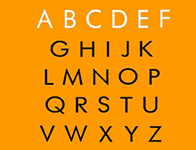
One of the greatest joys of living in the Netherlands is to meet people and communicate with them. There is so much to share: ideas, experiences, knowledge, understandings, arts, values and convictions etc. In so many situations language can help you giving direction to your life in the Netherlands:
- • in your career, in your communication with your colleagues and your superiors
- • in trade, in buying and selling
- • in your private life, communicating with your family, your children, your new friends, your new neighbours
- • in reading magazines about your hobbies, reading the newspapers, glossy magazines and even comics, watching TV or reading the program booklet of a concert
- • in sports, culture, music, dance, poetry, literature
- • in holidays, at the camping site, the new city or village, the hotel, the unknown road
- • in daily life, like in shops, businesses as well as in transportation
- • in faith and religion; in communicating about your beliefs and convictions
- • in issues related to legislation, like in renting or buying a house, obtaining your passport or driving licence
In short: even though the Netherlands is a small country with a small number of people, learning Dutch is the key to succes living in the Netherlands!
The starting point of this project is to facilitate people who find it hard to communicate in Dutch verbal communication. Language learning is not as easy as it might seem at first sight. For children it often is not a big deal to learn even two languages, whereas others, especially adults, find it very hard to do so. This has to do with the use of strategies. Whereas young children use both semantic (= meaning) and phonological (= sound) strategies, adults mainly rely on semantic strategies: they are often satisfied if they know the meaning of words, and then they stop exploring – or pivoting- the new language.
In Luiletterland Learning Suite we teach you how to develop several different, interacting strategies. In jargon this is called “ scaffolding” or “bootstrapping”. We avoid explicit grammar since transfer-problems prevent you from applying the rules in spontaneous situations. On the contrary, we teach you how to use your senses, your listening skills. You will discover sound patterns that are closely linked to grammar. Instead of teaching you e.g. the rules of the verb system, we make you using your natural and inborn capacity of using listening strategies for learning a language, Dutch in this case. Yes, like children do so!
This approach is “brain-friendly” due to the paradigm approach of the exercises. You discover by listening at short series patterns in words (like syllables and stress), sentences and short texts. All verbal materials are processed in five conditions: sound, meaning, writing for word and sentence structure, pragmatics and reasoning. So, words and sentences are being practised five times in one lesson!
The basics of Pivots Learning Suite are founded in research on how babies and young children perform this super job. It all starts with their listening skills and their very sensitive hearing system. Like them, PLS uses rhyme, intonation, rhythm and stress for learning Dutch. The beauty of this is that you learn grammar, meaning, intentions and writing with intuitive tools: your will learn grammatical structures not but head-aching rules, but with exercises.
This project teaches you the basics of Dutch
The aim of this website is to support those who are involved in teaching or learning. This site introduces texts and exercises that are relevant for communication in daily life, spoken by native speakers. You can study at three levels of the Common European Framework of Reference for Languages (CEFR) A1, A2 and B1. The materials are based on the project “Luiletterland” ®, (ROC Noorderpoort, Ministry of OCSW, 1996).
Before signing up, it maybe helpful to have a clear understanding of the nature of the this program. You will find a lot of materials: 500 exercises and 180 tests, mainly supported by audio materials. You will develop listening skills that enable you to develop listening strategies to explore and learn Dutch in communicational situations. So, you don’t just learn words, sentences and grammar, but you also learn how to learn Dutch from new, spontaneous situations. By definition any book or language method is limited to its own texts and exercises, so to overcome this limitation, the program also teaches you how to learn from new input. That’s why it is called “pivotal”, or heuristic.
You learn from only correct input. There area hardly no exercises in which you have to choose between correct and incorrect items; so you will not “learn” false language. You learn from paradigms in exercises. At first sight this may seem boring, but rapidly you will discover the fun of the exercises, since the authors were very creative in the feel of playing with language. You learn a lot about Dutch grammar –hidden in auditory exercises-. To put it in short, you will learn even rather complicates rules without explicit grammar, since we know from extended research that –due to transfer problems to normal communication- this is most often not very helpful. Moreover all aspects of language are involved, modelled in separate learning lines: sound (phonology), meaning, writing and spelling, pragmatics and logics c.q reasoning.
An evaluation study that involved over 600 students showed significant learning effects.